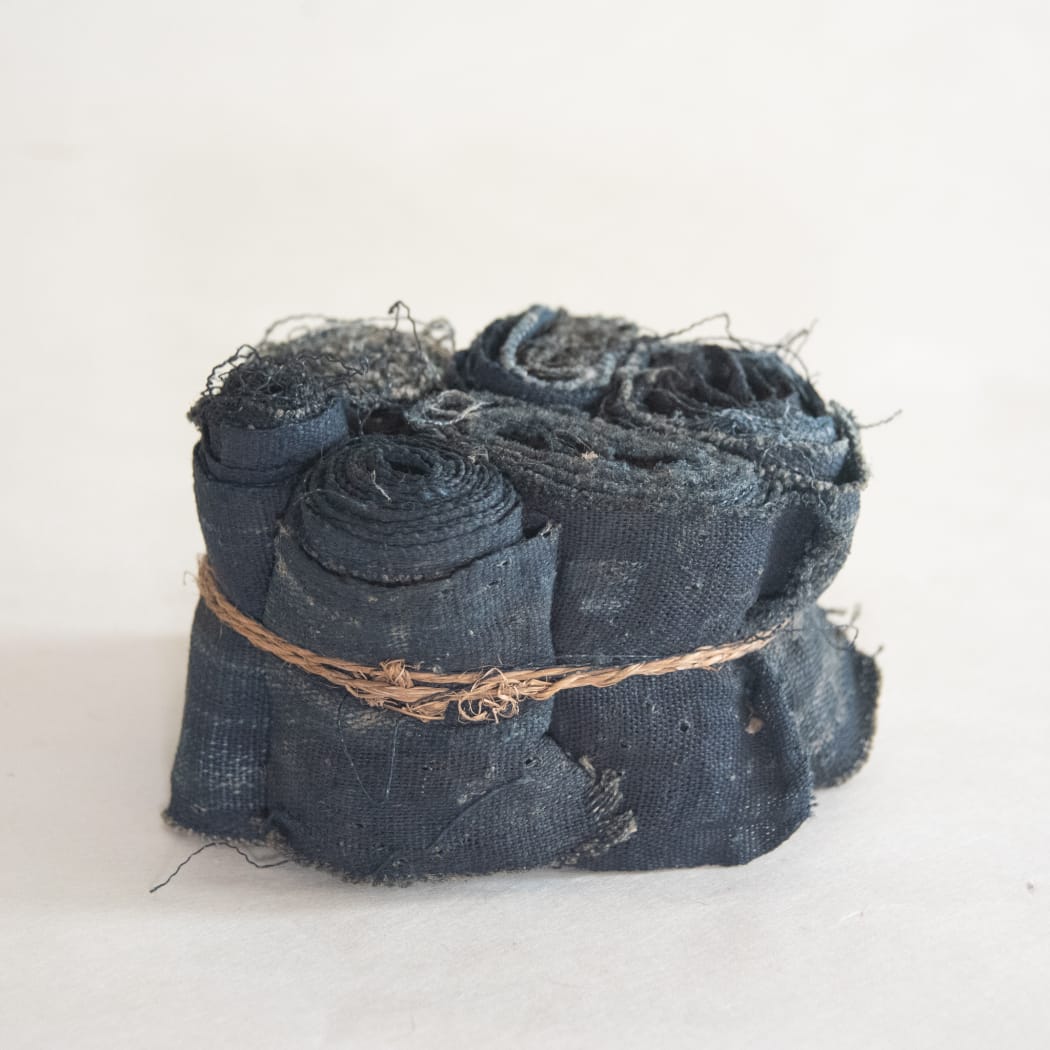
Some objects contain a charisma that is undeniable, despite their function or lack thereof. This bundle of the discarded ends of tatami mats, from the mid to late Edo period, is full of it. The object has a strange double presence that is at once totally recognizable yet completely abstract and expressive. For even if we didn’t know exactly what its origins were, we couldn’t doubt that this is a bundle fashioned with twine from various rolls of indigo fabric. And yet some magic of time and use has given each roll it own personality, its own line and gesture as if they each came from the hand of a different artist. Some have composed, neat ends, while others crackle and fray with anarchic joy. A few have retained their deep indigo color, while others reveal hints of un-dyed cotton through unfurling ends and areas of wear. Either way, this motley crew of characters is inextricably intertwined, bunched together at the middle in perfect, chaotic unison.
Indigo is no longer used to line the ends of tatami mats; this object is consequently the result of a long outdated process. The indigo ends were likely eroded by the many feet that passed over them, until they were no longer seen as fit to decorate anyone’s interior. While the tatami were tossed out, it must have crossed some person’s mind to hang on to these indigo edges. One must wonder who this person must have been, and what potential for beauty they saw in the pieces that caught their eye. Whoever they are, and whatever they may have seen at the time, we owe them thanks.
This object could only be what it is because it was transformed by use. It reckons to the contemporary practice of documenting performance art, as it functions like a remnant of the weight of many feet that have passed over it and altered its state. The “art” of the piece exists in its material form, but also of the process that it documents. Strangely, when these pieces are reconfigured into a bundle, they recall a hunched cluster of bodies similar to the ones that may have sat upon the mat. Perhaps the material has retained some mark of its many users, transfiguring itself to imitate their form. Regardless, it is fantastic as an object, humble in origin yet full of the variety and texture of form that we crave from art.